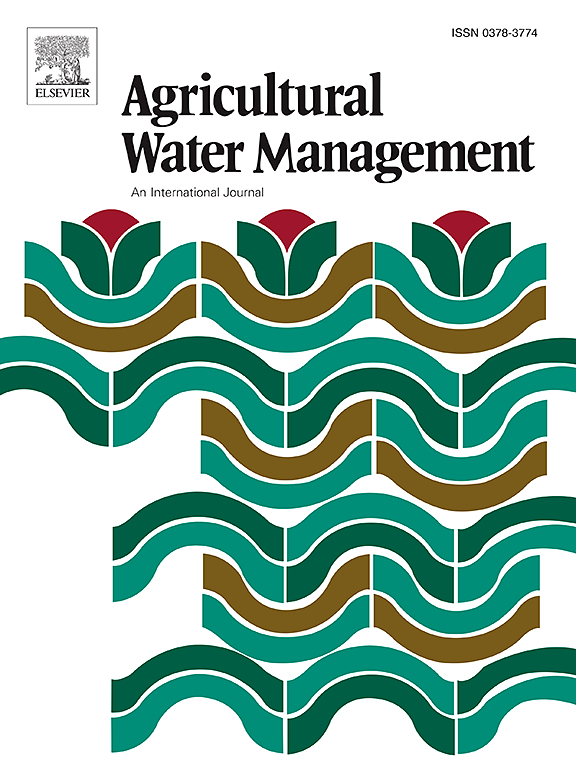利用暴雨与灌溉的相似性估算干旱地区灌溉用水量
IF 6.5
1区 农林科学
Q1 AGRONOMY
引用次数: 0
摘要
灌溉是全球用水量最大的活动,并且由于人口增长和气候变化而不断扩大。灌溉水利用的准确量化对于优化水资源配置至关重要,特别是在干旱和半干旱地区。然而,现有的基于遥感的IWU估算方法在干旱区由于数据稀缺和深层土壤水分动态表征不足,往往表现不佳。提出了一种利用干旱区强降雨与灌溉事件相似性估算IWU的新方法。为了更好地描述灌溉与地下水位之间的非线性和复杂关系,我们首先开发了一个机器学习模型来克服再现浅层含水层比产量时空变异性的困难。将在强降雨条件下建立的具体产量估算模型转移到灌溉条件下,通过水量平衡方程推导出IWU的时空分布。该方法应用于河套灌区(HID),这是亚洲最大的单渠头重力灌区。我们的模型准确地捕获了地下水动态,并得出了与观测和先前研究一致的运河用水效率估计。土壤水分利用效率呈下降趋势,与向日葵种植面积的增加和引水指标的减少有关。IWU的时空分布与种植格局的变化具有高度的一致性。该方法在高时空分辨率下揭示了人类灌溉活动的变化和强度,为干旱区水资源管理提供了重要见解。本文章由计算机程序翻译,如有差异,请以英文原文为准。
Estimation of irrigation water use in arid areas by leveraging the similarity between heavy rainfall and irrigation
Irrigation is the most water-consuming activity globally and continues to expand due to population growth and climate variability. Accurate quantification of irrigation water use (IWU) is essential for optimizing water resource allocation, especially in arid and semi-arid regions. However, existing remote sensing-based IWU estimation methods often underperform in arid regions due to data scarcity and insufficient representation of deep soil moisture dynamics. A novel method for estimating IWU was proposed by utilizing the similarities between heavy rainfall and irrigation events in arid regions. To better describe the nonlinear and complex relationships between irrigation and groundwater level, we firstly developed a machine learning model to overcome the difficulty of reproducing the spatiotemporal variability of specific yield in shallow aquifers. We then transferred the specific yield estimation model established during heavy rainfall to irrigation scenarios and derived the spatiotemporal distribution of IWU through the water balance equation. The proposed method was applied to the Hetao Irrigation District (HID), the largest gravity-fed irrigation district with single canal head in Asia. Our model accurately captured groundwater dynamics and yielded estimates of canal water use efficiency consistent with observations and previous studies. The IWU in the HID showed a declining trend, associated with the increase in sunflower cultivation area and the decrease in water diversion metrics. The spatiotemporal distribution of IWU exhibited a high degree of consistency with changes in cropping patterns. Our method reveals variations and intensity of human irrigation activity at high spatiotemporal resolution and provides important insights for water resource management in arid regions.
求助全文
通过发布文献求助,成功后即可免费获取论文全文。
去求助
来源期刊

Agricultural Water Management
农林科学-农艺学
CiteScore
12.10
自引率
14.90%
发文量
648
审稿时长
4.9 months
期刊介绍:
Agricultural Water Management publishes papers of international significance relating to the science, economics, and policy of agricultural water management. In all cases, manuscripts must address implications and provide insight regarding agricultural water management.
 求助内容:
求助内容: 应助结果提醒方式:
应助结果提醒方式:


